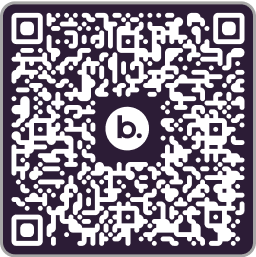 RaiBlocks Price INR (XRB to INR)
RaiBlocks Price INR (XRB to INR)
RaiBlocks Price in India
RaiBlocks uses technology called Block-Lattice, an algorithm similar to that of IOTA. This allows transactions in real time and at no cost.
This is made possible by Account Chains, which are private Blockchains for each user, not dependent on the main Blockchain. Each account and its Account Chain can be updated by the user at any time.
RaiBlocks in September 2017
And at 10,63 INR on 1st September 2017, XRB reached to settle at 5,03 INR on 30th September 2017. Although RaiBlocks had released a new version in August 2017. It did not contribute much to the growth of XRB due to maintenance and technical issues.
RaiBlocks in October 2017
And at 5,43 INR on 1st October 2017, XRB experienced an up-surge at 7,45 INR on 30th October 2017. The surge most likely happened to their wallet optimization and at the technical end there was the RPC Protocol expansion and backend testing of their mobile wallet which took the XRB team to get hands into with.
RaiBlocks in November 2017
And at 6,55 INR on 1st November 2017, XRB experienced a rapid increase to 13,45 INR on 30th November 2017.
RaiBlocks in December 2017
And at 14,34 INR on 1st November 2017, XRB sky-rocketed to 1, 347 INR on 30th November 2017. XRB team was full time on BitGrail and Mercatox and actively working on expanding the exchanges that offered RaiBlocks. Also they were experiencing 7000 + transactions per sec due to this spike.
About RaiBlocks
RaiBlocks hopes to become what Bitcoin has a hard time becoming: an effective and viable alternative to fiat money.
Bitcoin versus RaiBlocks:
-
Scalability issues are causing a hindrance Bitcoin users and face high transaction costs, with a median fee of $ 10.38.
-
The high bitcoin computing latency refers to an average transaction time of 164 minutes.
-
The Bitcoin Consensus on Proof Of Work uses about 27.28 TWh annually, an average of 260 KWh per transaction.
-
Using its own "block-lattice" structure, RaiBlocks wants to succeed where Bitcoin did not succeed. XRB cryptocurrency promises to deliver zero-cost transactions in real time without the same overhead and power consumption as Bitcoin.
More Features about RaiBlocks
Like IOTA, RaiBlocks uses a Directed Acyclic Graph (DAG) algorithm, but instead of using DAG for entanglement, RaiBlocks uses its own innovative technology called block-lattice.
The block-lattice infrastructure works like a blockchain, but with some major differences. For starters, every account on the RaiBlock protocol has its own blockchain called account-chain. Only the user of an account string can change its state, which allows each account string to be updated asynchronously from the rest of the block-lattice network.
This means that users can send and update blocks on their account chain without depending on the entire network. To do this, any funds sent to RaiBlock's LAT requires two transactions: a sending transaction and a receiving transaction. For a transaction to be settled, the receiving party must sign a block confirming that the funds have been received. If only the sender block is signed, a transaction is pending settlement. All transactions are sent in User Datagram Protocol (UDP) packets, which reduces IT costs and allows shippers to transfer funds even if a recipient is offline.
One of the most attractive features of this block-lattice is the way its ledger manages and stores transactions. Each RaiBlock transaction is its own block, and each new block replaces the one in front of it on its user's account string. In order to maintain an appropriate account history, the new blocks take into account the current balance of the account holder and integrate it into the processing transaction.
To illustrate this, if you send an XRB to someone, the transaction is verified by taking the difference between the sending block and your current balance from the previous block. At the other end of the transaction, the receiver would then add the amount to the previous block in its chain of account. The end result is a new block that records the updated balance of each user.
As part of this system, RaiBlocks keeps a record of the balance of an account on its ledger, and not a complete history of all transactions such as traditional ledger books (For example the Bitcoin blockchain not to mention it) . This means that the RaiBlocks network only has to keep a record of each account on its ledger. Instead of keeping a record of all previous transactions, the network only records account balances.
Disclaimer: Trading in cryptocurrencies are subject to market, technical and legal risks.
The prices fluctuate based on local demand and supply.
©2024 Bitbns.com. All rights reserved|footer.termsOfService|footer.privacyPolicy












